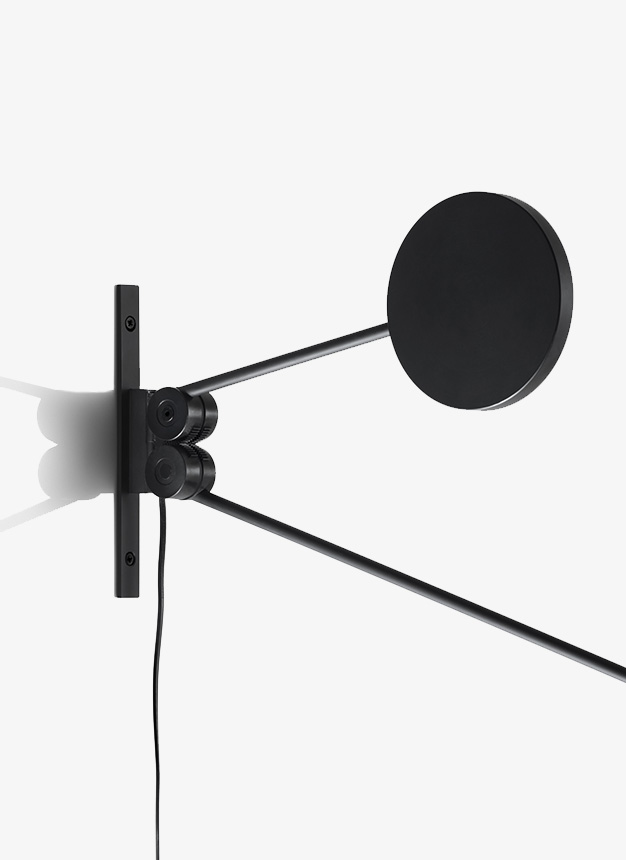CounterbalanceWall
designed by Daniel Rybakken
An object that seems to defy the laws of physics. Positioned as desired in space, the essential Counterbalance LED lamp, with its position variation, suggests the dynamic equilibrium of a sculptural mobile.
The unit is produced in matte black or red with an aluminium cap. The head is adjustable in any directions.
Models
D73N
Counterbalance

D73N
Counterbalance
Main specifications
| Typology | Wall | ||
|---|---|---|---|
| Application | Indoor | ||
| Material |
|
||
| Finishes |
|
||
| Dimensions (mm) | H 240-2220, L 85, W 710-1990 | ||
| Weight (kg) | 5.31 | ||
| Light Source | LED 16W, 2700K, CRI 90 | ||
| Insulation Class | III |
Download


Equipped with a fluid balancing system using gear wheels, the counterweight compensates for the movements of the long arm and ensures stability of the diffuser.
Born in 1984, Daniel Rybakken grew up in Oslo, Norway. He studied design at the Oslo School of Architecture and […]
Read his story







